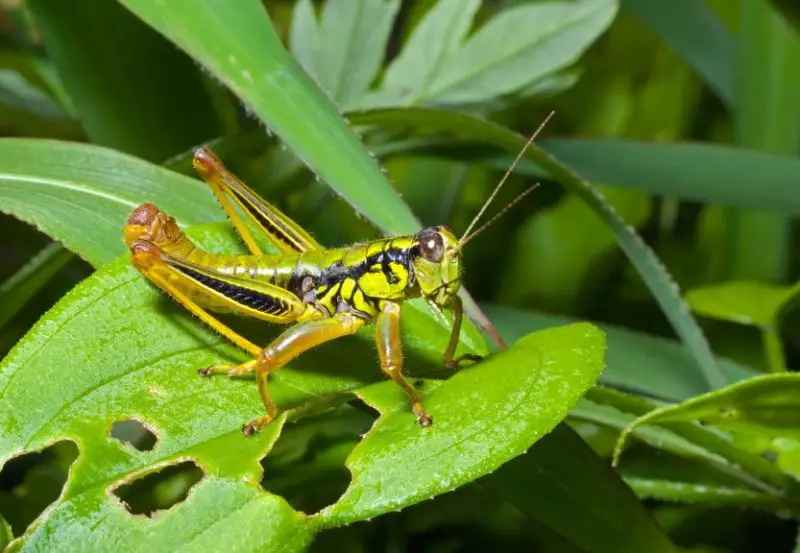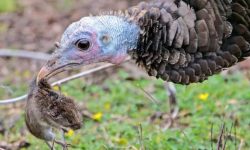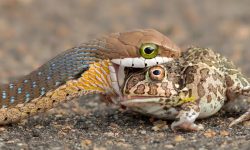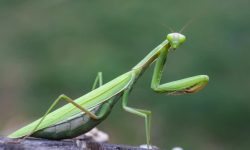Grasshoppers are among the most common and fascinating insects on Earth. Found in nearly every continent except Antarctica, they play a crucial role in ecosystems as both herbivores and prey. But have you ever wondered — what do grasshoppers eat?
Grasshoppers are primarily herbivores, meaning they feed on plants. Their strong mandibles (jaw-like mouthparts) allow them to chew through tough vegetation, including grasses, leaves, and crops. However, their diet isn’t limited to one type of plant — they consume a wide range of vegetation depending on the species, habitat, and season.
In this article, we’ll explore 20 foods grasshoppers love the most, explain how their diet changes with their environment, and reveal their surprising role in nature and agriculture.
Understanding Grasshopper Feeding Habits

How Grasshoppers Eat
Grasshoppers have powerful chewing mouthparts designed to bite, grind, and tear plant material. Unlike butterflies or moths, which sip nectar, grasshoppers rely entirely on solid foods.
They use their front legs to hold stems or leaves steady, while their jaws chew side-to-side to break down the food. Their digestive system quickly converts plant carbohydrates into energy, helping them stay active and alert.
When Do Grasshoppers Eat?
Grasshoppers are mostly diurnal, meaning they eat during the day. They feed heavily in the morning and late afternoon when temperatures are moderate. In cooler seasons or during drought, they may slow their feeding but continue nibbling on available vegetation.
Why Diet Matters for Grasshoppers
A grasshopper’s diet directly affects its growth, survival, and reproduction. Different plant species provide varying levels of protein, sugar, and fiber. Some grasshoppers even change their color or size depending on what they eat — a fascinating adaptation to their environment.
20 Foods Grasshoppers Love the Most
1. Grasses
Grasses make up the bulk of a grasshopper’s diet. They prefer tender shoots and leaves from plants like Bermuda grass, wheatgrass, and bluegrass.
These grasses are rich in carbohydrates and moisture, providing quick energy and hydration. In open meadows and savannas, grasshoppers spend most of their day grazing just like miniature herbivores.
Grass-eating also keeps natural grasslands in check, preventing overgrowth and promoting healthy ecosystems.
2. Wheat
Wheat fields attract grasshoppers due to the soft, juicy leaves and high sugar content in young plants.
Grasshoppers often feed on wheat seedlings and stems, which provide carbohydrates and nutrients for fast growth. However, during large infestations, they can cause significant crop damage.
In agricultural ecosystems, wheat serves as both a natural food source and a hotspot for grasshopper activity.
3. Corn
Corn is one of the most appealing crops for grasshoppers. They eat the leaves, tassels, and sometimes even kernels, depending on the plant’s stage of growth.
Corn is packed with starch and moisture, making it an excellent energy source. For wild grasshoppers, cornfields provide abundant shelter and nutrition throughout the growing season.
Farmers often monitor grasshopper populations closely during summer to protect young corn plants.
4. Clover
Clover leaves and flowers are among the grasshopper’s favorite foods. They’re high in protein, minerals, and fiber — perfect for supporting molting and reproduction.
Clover also grows abundantly in meadows, pastures, and lawns, providing easy access to food. Because of its high nutritional value, clover is especially important for young grasshoppers (nymphs).
5. Alfalfa
Alfalfa is another legume that grasshoppers can’t resist. Its soft, moist leaves are rich in protein and calcium.
In rural areas, alfalfa fields often host large grasshopper populations during summer months. The insects feed continuously, sometimes stripping entire sections of plants.
Despite being a pest in agriculture, grasshoppers also help aerate soil and recycle plant material through their droppings.
6. Leaves of Garden Plants
Grasshoppers frequently target the tender leaves of garden plants like lettuce, spinach, and cabbage. These leafy greens are easy to chew and full of water, helping grasshoppers stay hydrated in dry conditions.
They also eat bean leaves, potato foliage, and tomato plants when available. Gardeners often notice irregular holes and shredded edges — classic signs of grasshopper feeding.
7. Weeds
Wild weeds like dandelions, plantain, and pigweed are staple foods for grasshoppers. These hardy plants are available even in harsh environments, ensuring year-round nourishment.
Weeds provide a variety of minerals and fibers that help grasshoppers digest other foods more effectively.
By feeding on weeds, grasshoppers also help control certain fast-spreading species in natural habitats.
8. Flowers and Petals
Grasshoppers occasionally eat flowers, especially brightly colored species like daisies, sunflowers, and marigolds. They consume both petals and pollen when available.
Flowers offer natural sugars and trace minerals that boost energy. However, because they’re seasonal, flowers are more of a treat than a staple food.
This behavior also contributes indirectly to pollination, as grasshoppers move from bloom to bloom.
9. Tree Leaves
In forests and woodlands, grasshoppers climb trees or shrubs to feed on leaves. They particularly enjoy oak, elm, and willow leaves.
Tree leaves are tougher than grass, so only larger or mature grasshoppers can handle them. They provide fiber, minerals, and chlorophyll — all essential for growth.
By nibbling on tree foliage, grasshoppers contribute to natural pruning and leaf turnover.
10. Shrubs and Bushes
Shrubs like sagebrush, milkweed, and sumac provide additional plant matter for grasshoppers living in dry or semi-arid regions.
Their leaves contain essential oils and compounds that some grasshopper species tolerate better than others, showing remarkable adaptability.
Shrub feeding also helps prevent woody plant overgrowth in grasslands.
11. Fruits
Although not a major part of their diet, grasshoppers occasionally feed on ripe or fallen fruits such as apples, berries, peaches, and melons.
These fruits offer natural sugars, vitamins, and moisture — especially valuable in hot, dry conditions.
Fruits are also easier to chew when soft or overripe, making them a convenient seasonal treat for adult grasshoppers.
12. Seeds
Grasshoppers eat a variety of plant seeds, especially during late summer and autumn when plants begin to dry out.
Seeds are packed with fats and proteins that sustain grasshoppers before cooler months arrive. They often chew through seed pods of wildflowers or crops like soybeans.
This seed consumption also helps disperse some plant species through partial digestion and movement.
13. Bark and Stems
In times of food scarcity, grasshoppers resort to eating the outer bark and stems of plants.
Although these parts are tougher and less nutritious, they still provide fiber and trace minerals. Bark feeding is most common during droughts when fresh vegetation is limited.
Their strong jaws allow them to scrape the surface of stems for residual plant sap.
14. Grains and Cereals
Wild and domestic grasshoppers feed on grains such as oats, barley, and rice. These foods offer concentrated energy and are often found in agricultural areas.
Grains support reproduction and help grasshoppers survive seasonal migrations.
However, heavy infestations in grain fields can lead to significant agricultural losses.
15. Herbs
Grasshoppers enjoy aromatic herbs like basil, mint, and parsley. These plants contain natural oils that, while strong for humans, attract certain grasshopper species.
Herbs offer a mix of minerals and fibers, providing variety in their diet.
For gardeners, protecting herb gardens often requires using natural deterrents or companion planting.
16. Vegetation Around Water Sources
Grasshoppers near rivers and lakes feed on moist plants like cattails, bulrushes, and sedges.
These plants are rich in moisture and nutrients, supporting hydration and digestion.
This aquatic vegetation also provides shelter from predators, making it an ideal feeding ground.
17. Crops and Field Plants
In agricultural regions, grasshoppers are known to consume nearly every type of field plant — from soybeans to sunflowers.
These plants supply essential carbohydrates and proteins, helping grasshoppers grow quickly and reproduce in large numbers.
However, this adaptability is what makes them one of the most persistent crop pests worldwide.
18. Legumes
Leguminous plants such as peas, beans, and lentils are protein-rich and easily digestible for grasshoppers.
Their soft leaves and pods provide both nourishment and hydration. In many regions, grasshoppers rely on legumes when other plants have dried out.
The nitrogen content in legumes supports healthy muscle development and reproduction.
19. Moss and Lichen
In cooler or mountainous habitats, grasshoppers consume mosses and lichens growing on rocks or soil.
These low-lying plants provide trace minerals and a constant source of moisture. Although not as energy-rich as grasses, they help grasshoppers survive in harsh conditions.
This feeding adaptation shows just how resilient and resourceful grasshoppers can be.
20. Other Grasshoppers (Rarely)
While rare, some grasshopper species may engage in cannibalism, especially during severe droughts or overcrowding.
This behavior usually occurs when food is scarce and protein is desperately needed. It helps reduce population density and maintain survival balance.
However, for most species, cannibalism is an emergency behavior rather than a common dietary habit.
Why Grasshopper Diets Matter
Ecological Importance
Grasshoppers are not just plant-eaters; they are vital ecosystem players. Their feeding helps recycle plant material into the soil, promoting nutrient cycles.
They also serve as an essential food source for birds, reptiles, and small mammals. Without grasshoppers, entire food chains would collapse.
Agricultural Impact
While beneficial in nature, grasshoppers can become agricultural pests when their populations boom. They can devour entire fields of crops, causing millions in losses.
Balanced ecosystem management — like encouraging natural predators (birds and spiders) — helps keep grasshopper numbers under control.
Frequently Asked Questions (FAQs)
Do grasshoppers eat meat?
No, grasshoppers are herbivores. They feed primarily on plant materials like grass, leaves, and stems. In rare cases, they may eat other insects during food shortages.
What do baby grasshoppers (nymphs) eat?
Nymphs eat the same foods as adults — tender grasses, small leaves, and young plants — but require softer vegetation because their jaws are still developing.
Do grasshoppers drink water?
Grasshoppers get most of their water from the plants they eat. However, they may drink dew or moisture from leaves when available.
What do grasshoppers eat in winter?
In colder climates, most grasshoppers die off or lay eggs before winter. In warmer regions, surviving individuals feed on dry grasses, weeds, or stored vegetation.
Why do grasshoppers eat crops?
Crops like wheat, corn, and soybeans are dense in nutrients and easy to chew, making them ideal for fast energy and reproduction.
Conclusion
Grasshoppers are remarkable survivors, able to adapt their diet to nearly any environment. From lush grasses and crops to tough weeds and even tree leaves, their plant-based diet fuels their energy, agility, and reproductive success.
While they can sometimes cause trouble for farmers, grasshoppers are essential to the natural world. They recycle nutrients, support food chains, and maintain balance in ecosystems.
So the next time you see a grasshopper hopping through a field or garden, remember — this little insect is one of nature’s most efficient eaters, thriving on the simple power of plants.






